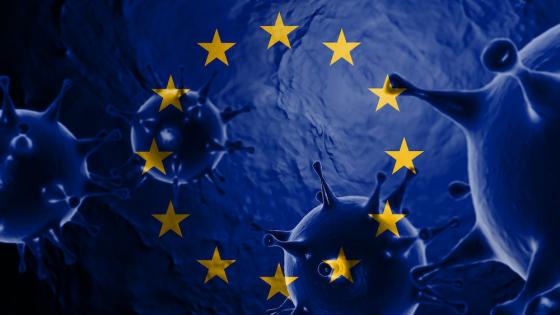The EU has been slow to formulate its response to the Covid crisis. Fortunately, things have started to change. The outcome of the Eurogroup meeting of 9 April may be viewed either as a half full or half empty glass, but in any case progress should be acknowledged on one point: a multiple-instrument route, consistent with the multiple objectives of the EU, has been agreed by the Eurogroup. However, the glass is still far from full.
National governments and the ECB have so far been at the forefront of the action, and rightly so. But stronger involvement of the EU is now called for. First, it should do more to make sure that governments throughout the union are, and will remain, able to fulfil their mission. Second, it should fulfil its own mission, which is to provide the public goods that are needed at this juncture and to foster solidarity. Third, it should put in place the mechanisms that will be required for what is bound to be a phase of reconstruction of the whole European economy. This means shoring up the Single Market and re-levelling the playing field, which is currently becoming uneven due to the part-suspension of rules on state aid and by countries’ differences in fiscal capacity to support their economies.
Improving on SURE and the ESM
The SURE mechanism, which is intended to enable national governments to borrow at preferential rates in order to finance higher unemployment and related social transfers during the crisis, and the companion new credit line at the European Stability Mechanism, with no further conditionality attached, are potentially powerful tools in the service of the first objective. But the EU’s leaders should finish work on these instruments, first by clarifying the maturities of the borrowings, and second by being prepared to beef up their amounts if needed.
Long maturities are essential to spread the cost of the crisis – at least 10 years for the SURE facility and 20-30 years for the new ESM credit line would be appropriate. The reason for such a long maturity is that the ESM credit line should work as an unconditional insurance to protect national governments from the risk of having to borrow at higher rates and shorter maturities on the market.
As far as amounts are concerned, the present proposal to allocate €100 billion to SURE may be sufficient to pay for the dislocation in the labour market during the present lockdown, but it will probably need to be larger for the period that will follow. It is important for EU leaders to signal that they are prepared to beef up the instrument should the lockdowns last longer or need to be tightened again after a phase of relaxation.
Both the SURE and ESM new credit lines will help governments to borrow on favourable terms, but they will add to existing national debts. Hence it is crucial now to find ways to jointly finance priority actions – such as dedicated research on potential Covid treatments and vaccines, or resources to ensure the smooth circulation of goods despite lasting restrictions on the mobility of persons – and to provide support to countries worst affected by the crisis in order to restart their own economies. It should be remembered that while it is a common threat, the pandemic has hit member states very unevenly so far – registered deaths range from 1 per million inhabitants to 400 per million. Solidarity in responding is both part of the genetic code of the EU and called for by national self-interest. Externalities and spillovers are bound to be large during this phase, and the re-levelling of the playing field is a core common objective which can only be achieved by action at the European level. A funding vehicle consistent with these observations and aimed at the broad agenda for reconstruction would be based on direct borrowing by the EU backed by future budgetary contributions by member states.
Reconstruction, recovery and modernisation
After several months of strict containment, and possibly additional months of restrictions on some activities, the corporate sector throughout the EU will come out deeply injured. Many businesses will find themselves unable to meet their debt obligations, even with some deferrals. Some sectors will need to invest in order to cope with new distancing regulations. Some, like tourism or restaurants, will not recover for a long time. Others, like airlines, may be permanently hit. All will suffer from a debt overhang. National governments are already making plans to address this issue, but uncoordinated action at the national level risks two shortcomings. One is that against the background of heightened concerns over self-sufficiency, we will fall into some sort of subsidy war that will perpetuate overcapacity in distressed sectors and undermine the level playing field. The second is that the amount of debt relief and capital support to struggling businesses will depend on the fiscal capacity of each national government. This would further weaken the economy of the weakest countries and thereby damage their fiscal capacity, threatening fiscal sustainability.
On 9 April, the Eurogroup agreed to “work on a [temporary] Recovery Fund to prepare and support the recovery, providing funding through the EU budget to programmes designed to kick-start the economy in line with European priorities and ensuring EU solidarity with the most affected member states”. The idea is to define common priorities for action, select joint projects, and spread the financing of this programme over time through some form of joint borrowing backed by future GDP-linked contributions from all member states. So far, the debate has focused on the funding side – whether to rely on future contributions to the EU budget (and in this case, the compatibility with Article 310 of the treaty) or to use a special purpose vehicle – and on the balance between solidarity and moral hazard. In our view, it would be more productive to start by agreeing on the purpose of such a Recovery Fund. With shared objectives and modalities, it will be easier to find an agreement on the funding.
The objective of a Recovery Initiative should be to repair and reconstruct the EU economy: to repair corporate balance sheets and value chains; and to reconstruct the economy on a new, sustainable basis through investment in common public goods such as research, resilience, and the greening of the economy. We should keep in mind that other pandemics could erupt in the future, as well as climate disasters. The Single Market agenda should be about resilience as well as efficiency.
The task is huge, and the risks are equally high that the ‘Recovery Fund’ ends up being highjacked by the particular interests of governments or businesses. The historical record of structural funds is not always brilliant in this respect. Hence it is important to be precise on the objectives and think about the governance from the start.
Concerning investment projects, it is vital to avoid the traditional rigidities and juste retour features of the EU budget. Once priorities are decided by the Council, the implementation should be carried out by a temporary, dedicated body with an appropriate auditing process. The allocation of the funds could be decided by an independent committee based on regular calls for tenders, with clear social return and sustainability criteria. To speed up the process, priority could be given to investments that had already been planned before the crisis but have been frozen, and to those that will directly ease bottlenecks and deficiencies in health and protection equipment, but also in cross-border logistics.
Repairing corporate balance sheets will involve a different type of action. Some governments have already started to provide equity to their national ‘champions’. Although understandable, these interventions risk going against the competition objectives of the single market and, in some cases, may result in overcapacities and inconsistency with the greening of the economy. As the guardian of the integrity of the Single Market, the Commission must monitor and coordinate these interventions on a sector-by-sector basis (Motta and Peitz 2020). In some cases, it should take the lead in carrying out profound restructuring – as it did for the steel industry in the 1970s.
Equally urgent is to help small and medium size enterprises (SMEs) to survive. Creative schemes have been proposed, such as ‘equity-like’ instruments that would provide a direct transfer, or grant, against an obligation to pay a surcharge on future profit taxes (Boot et al. 2020). An EU-level equity fund could supplement such intervention at the national level where the power to tax resides, ensuring that SMEs across the EU are treated equally. This is currently not the case, as public guarantees to bank loans vary depending on the fiscal strength of the states. So part of the budget raised under the recovery initiative should be used to capitalise an equity fund whose task would be to help national agencies (such as Cassa Depositi e Prestiti in Italy) to invest in equity or ‘equity-like’ instruments, based on common criteria related to viability, state aid, and green tests (Schoenmaker 2020). Each intervention should also be clear on how it will eventually be discontinued, within a window of, say, five years.
Providing funding in the form of equity or equity-like instruments would give all EU members states, as the backers of the recovery fund, a share in the upside from its actions. The institutional framework needs to be cleared from the expected pressure of both governments and business organisations. The European Investment Bank might be a natural candidate, as it already knows how to reach SMEs, in coordination with national agencies.
This pandemic may turn out to be a once-in-a-century crisis, but it is also possible that other deep and shared crises will strike in the not-too-distant future. Thus, beyond repairing the economy and recovering from the pandemic, the goal must be to make the European Union and its members resilient to future common crises.
References
Boot, A, E Carletti, H-H Kotz, J-P Krahnen, L Pelizzon and M Subrahmanyam (2020), “Coronavirus and financial stability 3.0: Try equity – risk sharing for companies, large and small”, VoxEU, 3 April.
Motta, M and M Peitz (2020), “EU state aid policies in the time of COVID-19”, VoxEU, 18 April.
Schoenmaker, D (2020), “A green recovery”, Bruegel Blog Post, 6 April.









